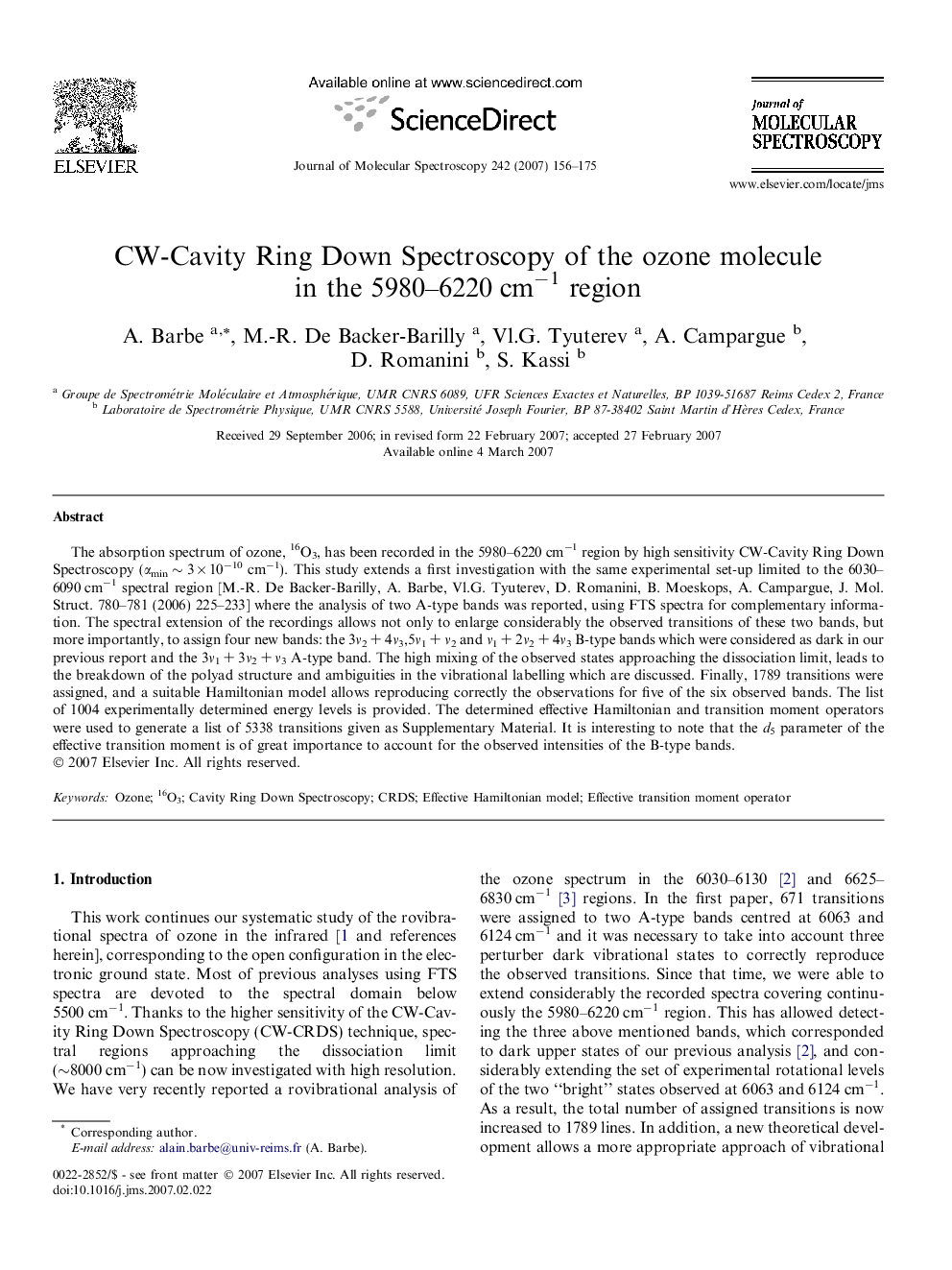| Article ID | Journal | Published Year | Pages | File Type |
|---|---|---|---|---|
| 5415890 | Journal of Molecular Spectroscopy | 2007 | 20 Pages |
Abstract
The absorption spectrum of ozone, 16O3, has been recorded in the 5980-6220 cmâ1 region by high sensitivity CW-Cavity Ring Down Spectroscopy (αmin â¼Â 3 Ã 10â10 cmâ1). This study extends a first investigation with the same experimental set-up limited to the 6030-6090 cmâ1 spectral region [M.-R. De Backer-Barilly, A. Barbe, Vl.G. Tyuterev, D. Romanini, B. Moeskops, A. Campargue, J. Mol. Struct. 780-781 (2006) 225-233] where the analysis of two A-type bands was reported, using FTS spectra for complementary information. The spectral extension of the recordings allows not only to enlarge considerably the observed transitions of these two bands, but more importantly, to assign four new bands: the 3ν2 + 4ν3,5ν1 + ν2 and ν1 + 2ν2 + 4ν3 B-type bands which were considered as dark in our previous report and the 3ν1 + 3ν2 + ν3 A-type band. The high mixing of the observed states approaching the dissociation limit, leads to the breakdown of the polyad structure and ambiguities in the vibrational labelling which are discussed. Finally, 1789 transitions were assigned, and a suitable Hamiltonian model allows reproducing correctly the observations for five of the six observed bands. The list of 1004 experimentally determined energy levels is provided. The determined effective Hamiltonian and transition moment operators were used to generate a list of 5338 transitions given as Supplementary Material. It is interesting to note that the d5 parameter of the effective transition moment is of great importance to account for the observed intensities of the B-type bands.
Keywords
Related Topics
Physical Sciences and Engineering
Chemistry
Physical and Theoretical Chemistry
Authors
A. Barbe, M.-R. De Backer-Barilly, Vl.G. Tyuterev, A. Campargue, D. Romanini, S. Kassi,
